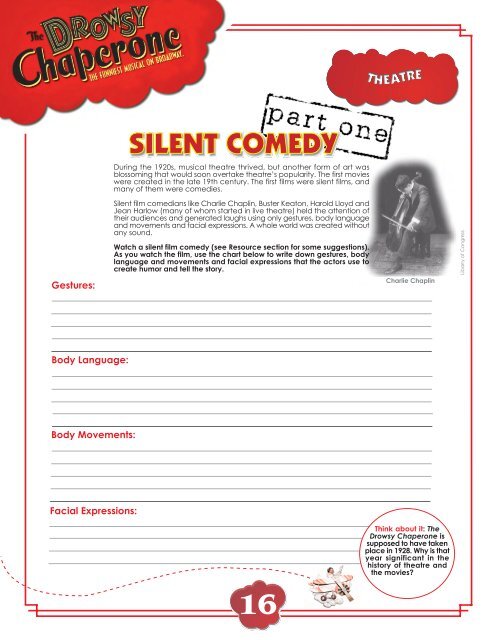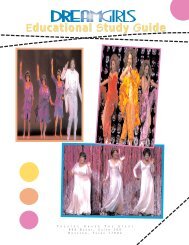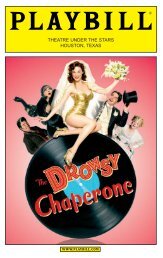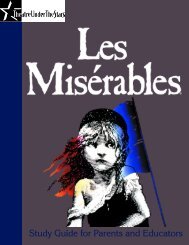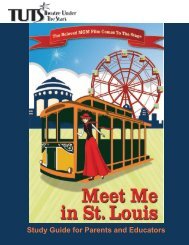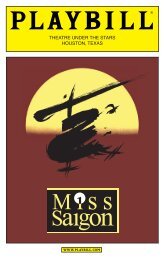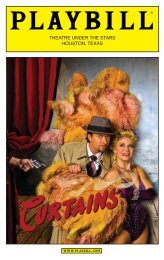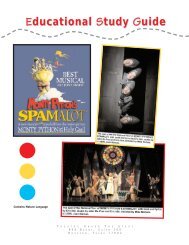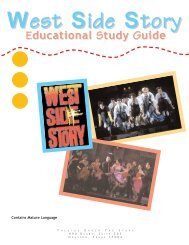The Drowsy Chaperone Study Guide - Theatre Under The Stars
The Drowsy Chaperone Study Guide - Theatre Under The Stars
The Drowsy Chaperone Study Guide - Theatre Under The Stars
You also want an ePaper? Increase the reach of your titles
YUMPU automatically turns print PDFs into web optimized ePapers that Google loves.
Gestures:<br />
Body Language:<br />
Body Movements:<br />
Facial Expressions:<br />
During the 1920s, musical theatre thrived, but another form of art was<br />
blossoming that would soon overtake theatre’s popularity. <strong>The</strong> first movies<br />
were created in the late 19th century. <strong>The</strong> first films were silent films, and<br />
many of them were comedies.<br />
Silent film comedians like Charlie Chaplin, Buster Keaton, Harold Lloyd and<br />
Jean Harlow (many of whom started in live theatre) held the attention of<br />
their audiences and generated laughs using only gestures, body language<br />
and movements and facial expressions. A whole world was created without<br />
any sound.<br />
Watch a silent film comedy (see Resource section for some suggestions).<br />
As you watch the film, use the chart below to write down gestures, body<br />
language and movements and facial expressions that the actors use to<br />
create humor and tell the story.<br />
16<br />
Charlie Chaplin<br />
Think about it: <strong>The</strong><br />
<strong>Drowsy</strong> <strong>Chaperone</strong> is<br />
supposed to have taken<br />
place in 1928. Why is that<br />
year significant in the<br />
history of theatre and<br />
the movies?<br />
Libarry of Congress


